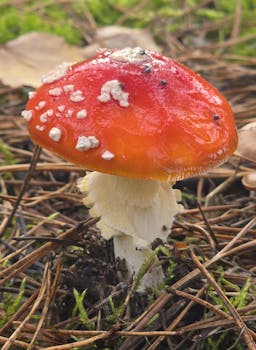
More Podiatry Foot Care Articles
Uncovering the Hidden Triggers of Toenail Fungus

Nail health is often overlooked, but understanding what causes toenail fungus is essential to maintaining healthy feet. Toenail fungus, also known as onychomycosis, affects many people worldwide and can be both an unpleasant and persistent condition. If you’re wondering why your toenails are discolored, brittle, or thickened, this guide will help you uncover the hidden triggers behind this common fungal infection.
What Causes Toenail Fungus?
Toenail fungus originates from fungi called dermatophytes that thrive in warm and moist environments. These fungi can infiltrate the nail through tiny cuts in the skin or small separations between the nail and nail bed. Once inside, they multiply, leading to the visible symptoms of infection. Let’s delve into some key risk factors that contribute to toenail fungus.
Risk Factors and Common Causes
Several factors can increase your likelihood of developing toenail fungus:
- Age: As we age, our nails become more brittle and dry, creating more openings for the fungi to enter.
- Reduced Blood Circulation: Conditions that reduce blood flow to the feet make it more challenging for your body to detect and fight off infection.
- Exposure in Communal Areas: Frequent visits to gyms, swimming pools, or showers can expose feet to environments conducive to fungal growth.
- Footwear: Wearing shoes that don’t allow for proper ventilation can create a warm, moist environment where fungi flourish.
- Toenail Injuries: Injuries leading to nail separation can create opportunities for infection.
- Underlying Health Conditions: Issues like diabetes or a compromised immune system can make individuals more susceptible to infections, including fungal ones.
Lifestyle and Environmental Factors
Besides inherent risk factors, daily habits can influence the development of toenail fungus. For instance, consistently wearing damp shoes or failing to maintain good foot hygiene plays a significant role. Regularly changing socks and keeping nails trimmed and clean helps avoid creating a breeding ground for fungi.
If you’re interested in learning about related health concerns, take a look at our article on commonly abused substances and their effects.
Treatment and Prevention Tips
While treatment options exist, prevention remains the most effective approach. Here are some tips to help you tackle toenail fungus:
- Maintain Proper Hygiene: Keep your feet clean and dry. Regular washing and thorough drying, including the spaces between your toes, is crucial.
- Choose Footwear Wisely: Opt for breathable shoes and change socks regularly, especially after exercise.
- Use Antifungal Products: Consider using antifungal powders or sprays in your shoes to prevent fungal growth.
- Avoid Walking Barefoot: In communal areas, wear protective footwear to minimize exposure to infectious fungi.
- Consult a Professional: If you notice any signs of infection, early consultation with a healthcare professional can lead to prompt treatment and better outcomes.
Seeking Medical Advice
For those whose infections persist despite following preventive measures, professional medical advice is recommended. Physicians may prescribe topical or oral antifungal medications to effectively treat the condition. However, treatment duration can be long, so patience and consistency are crucial.
For a comprehensive understanding of the treatment and management of toenail fungus, visit this informative resource on Wikipedia.
Conclusion
Understanding what causes toenail fungus empowers you to take proactive steps toward good foot health. By recognizing lifestyle and environmental factors, adopting preventive measures, and seeking professional help when needed, you can effectively manage and reduce the risk of toenail fungus.
- Toenail fungus is caused by fungi entering minor openings in the nail.
- Risk factors include age, reduced circulation, and communal exposures.
- Maintaining proper foot hygiene and choosing breathable footwear are key preventive measures.
- Medical treatment may be necessary for persistent infections.
- Consult professional sources for thorough treatment options.
FAQ
What are the initial signs of toenail fungus?
Early signs of toenail fungus include discoloration, such as white or yellow spots under the tip of your toenail. The nail may also appear thicker or more brittle.
Can toenail fungus spread to other parts of the body?
While toenail fungus primarily affects nails, it can occasionally spread to other skin areas like the feet, especially around the toes, causing what’s known as athlete’s foot.
Is toenail fungus contagious?
Yes, toenail fungus is contagious and can spread through direct contact with an infected surface or through sharing personal items like nail clippers or shoes.
Can I prevent recurrence of toenail fungus after treatment?
To prevent recurrence, practice good foot hygiene, keep feet dry, and avoid walking barefoot in communal areas. Regularly clean and disinfect your footwear and personal grooming tools.
Are home remedies effective against toenail fungus?
While some home remedies may help support treatment, they are typically less effective than medically endorsed antifungal treatments. It’s advisable to consult a healthcare provider for proper diagnosis and treatment guidance.
Other Articles You May Find of Interest...
- Identifying Ingrown Toenail Symptoms and Their Causes
- The Journey to Recovery: Discovering the Stages of Plantar Wart Healing
- Uncovering the Hidden Triggers of Toenail Fungus
- What Causes Tingling in My Feet? Understanding the Sensations in Your Toes
- Orthopedic Shoes: Where Fashion Meets Foot Support
- How to Heal a Fractured Foot: Treatment and Recovery
- Exercise and Your Feet: Preventing Injuries as You Get Active














